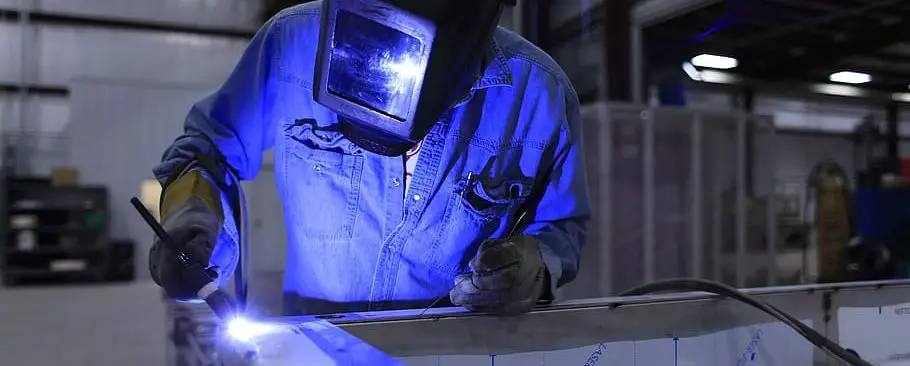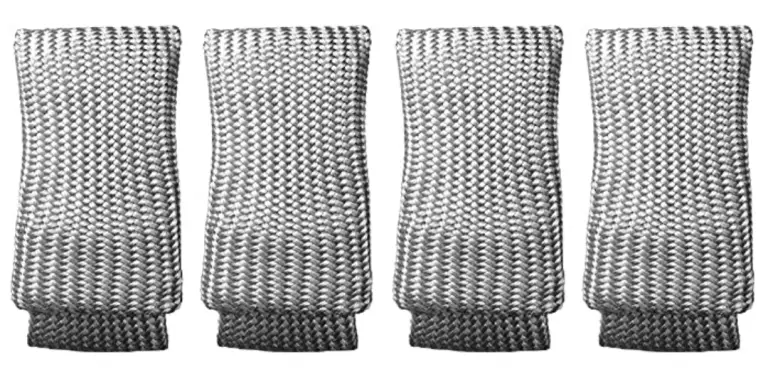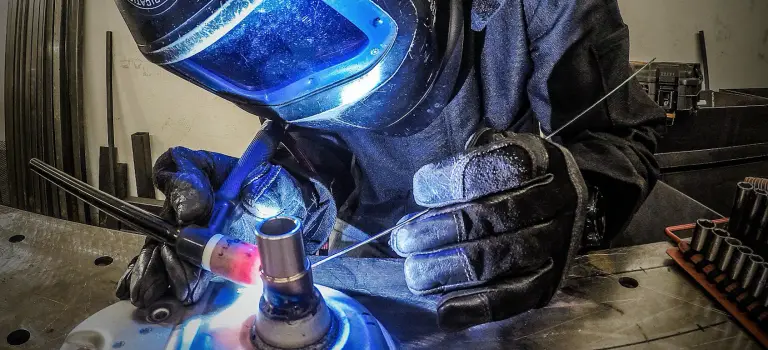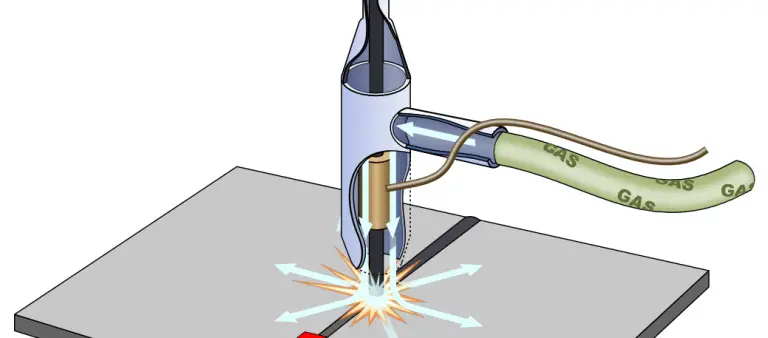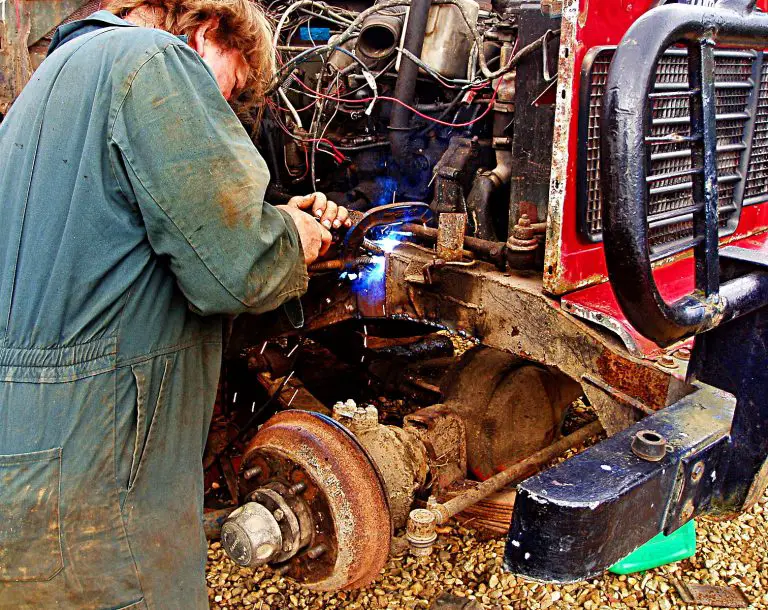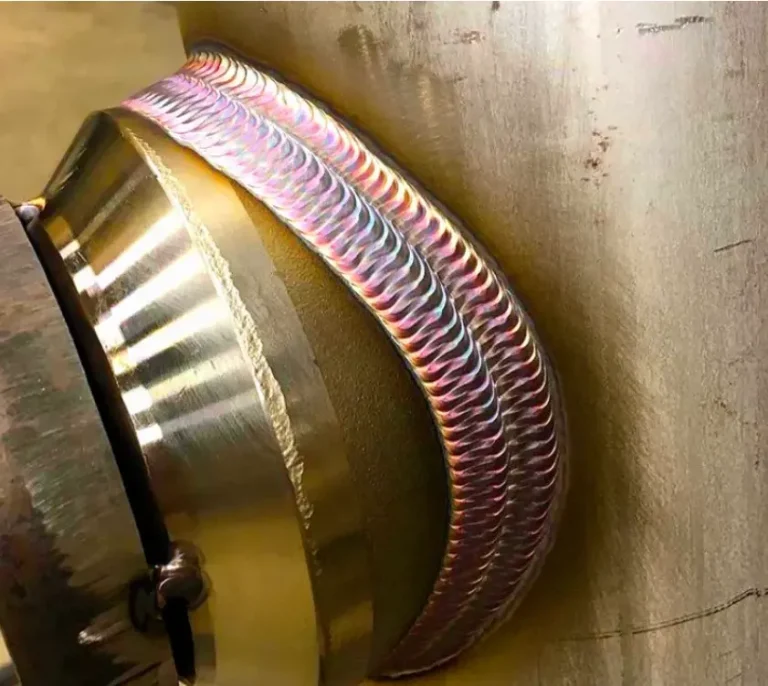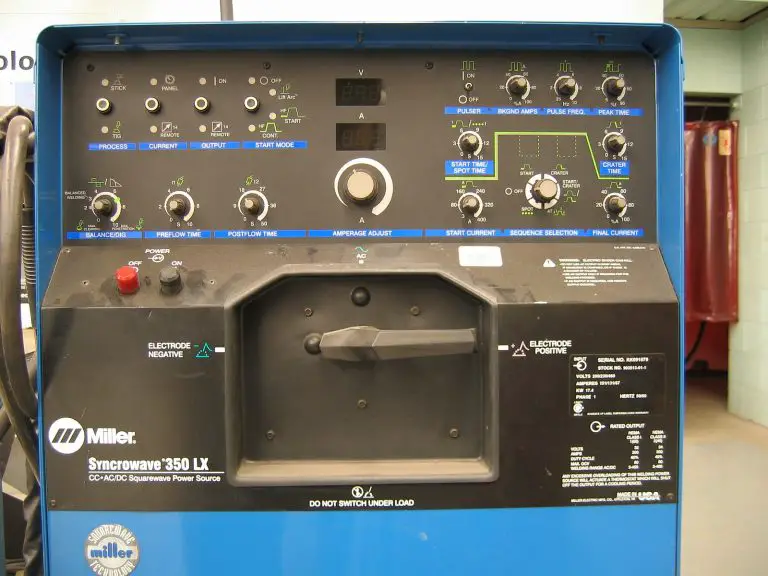MIG Welding Vs TIG Welding – Pros And Cons
This post contains affiliate links.
Both MIG and TIG are great processes for fabricating many different projects. However, they are very different from each other – TIG is a slower, more finite process while MIG is faster and more robust. MIG welding vs TIG welding is often a question that newbies ask.
This guide will talk about the benefits of each process, and also the downsides that come with each. Both are great skills to have in your arsenal, but you may find that you gravitate more towards just one of these processes.
As we always say, it is much better to be proficient with as many welding processes as you can master. Welders that are great at MIG, TIG and stick will progress much faster in their careers. If you limit yourself and say “I only MIG weld”, then companies will find you very unappealing to hire.
If you work for yourself, it is basically mandatory that you can weld with all 3 main processes. When a client calls you and you can’t tackle the job, then you’ll have to turn it down. This means that you’ll lose money every time you don’t have the skill set for a particular job. The most profitable welders are also the most well rounded welders!
If you’re a TIG welder at a sheet metal shop and you get laid off, you can go find a job MIG welding somewhere else that’s hiring – but only if you already know how to MIG.
Why Choose One?
Many professional welders enjoy both processes and do them on a regular basis. However, for a hobbyist that only has a small budget to get into welding, they may want to weigh the pros and cons to see what fits.
Not every welder will go on to welding as a career. Many folks just want to whip out some projects in their garage or workshop. They may need to weld on their car or motorcycle, build a coffee table, etc.
While there is no right or wrong, it is good that newbies understand the benefits and downsides to each process. This will help them make educated decisions when they are picking their welding classes or buying their first machine. It can also determine which gloves they end up getting or which jacket they choose for their first welding wardrobe.
Below we will jump into the benefits and downsides of each process.
Benefits Of MIG Welding
MIG welding allows the welder to cover a lot of ground – meaning that inch per inch, it is a much faster process than TIG welding. Once your machine is set up and your metal is prepped, you can just pull the MIG trigger and go. The larger spools of MIG wire will allow you to weld for days or weeks before it needs to be replaced.
This is much different than TIG because TIG filler rods are only about 3 feet long. You must grab a new one quite frequently if you plan on fabricating a project with TIG.
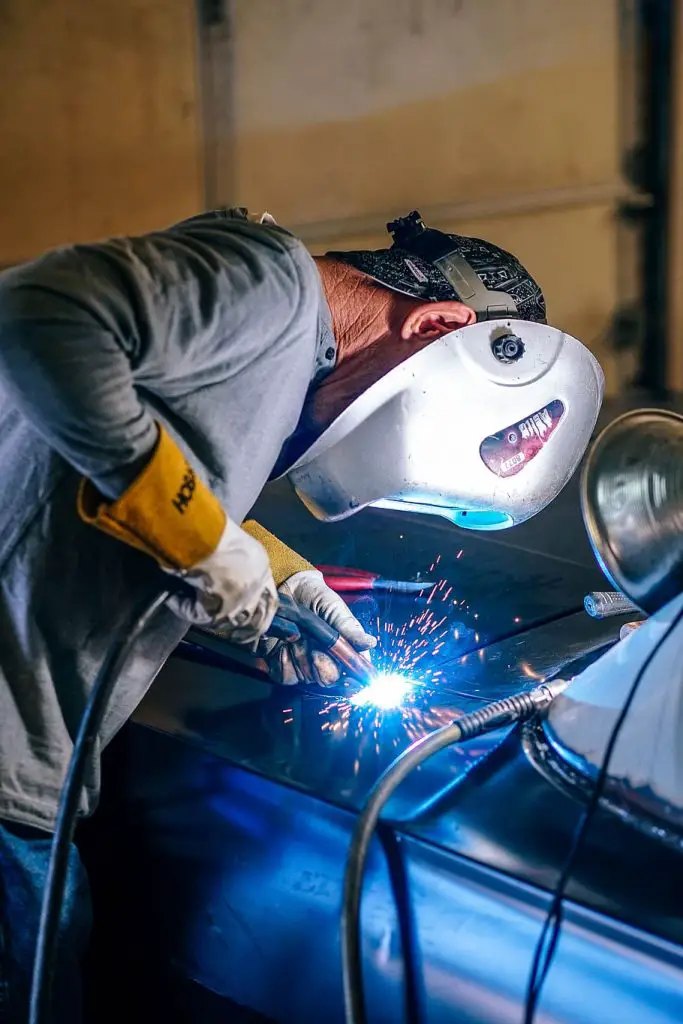
MIG is also more user friendly than TIG. It requires less dexterity and as long as you have relatively steady hands, you can become a great MIG welder with practice. No foot pedal (and no wire feeding with your other hand) allows you to breeze through projects more gracefully.
MIG also requires less prep work than other processes. Removing the mill scale is always a good idea, but it is not required. As long as your steel is relatively clean, then you can start MIG welding right away. However, removing mill scale will ensure that the welds are less likely to crack over time. For projects that require higher strengths, metal prep is a great idea.
MIG is a great process for beginners that just want to get a feel for welding. Newcomers can often lay a decent bead during their first day of MIG welding (if they are properly instructed). This will lead to less discouragement and will often keep newcomers coming back for more.
TIG welding is more difficult, and newcomers may find that it takes days or weeks for them to lay their first solid bead.
Benefits Of TIG Welding
TIG welding has the widest amperage range of (just about) any welding process out there. You can weld extremely thin sheet metal at 30 amps, and you can weld 1″ thick plate at 350 amps. Any amperage in between is also fair game… This makes it a very diverse process that has a place in many projects.
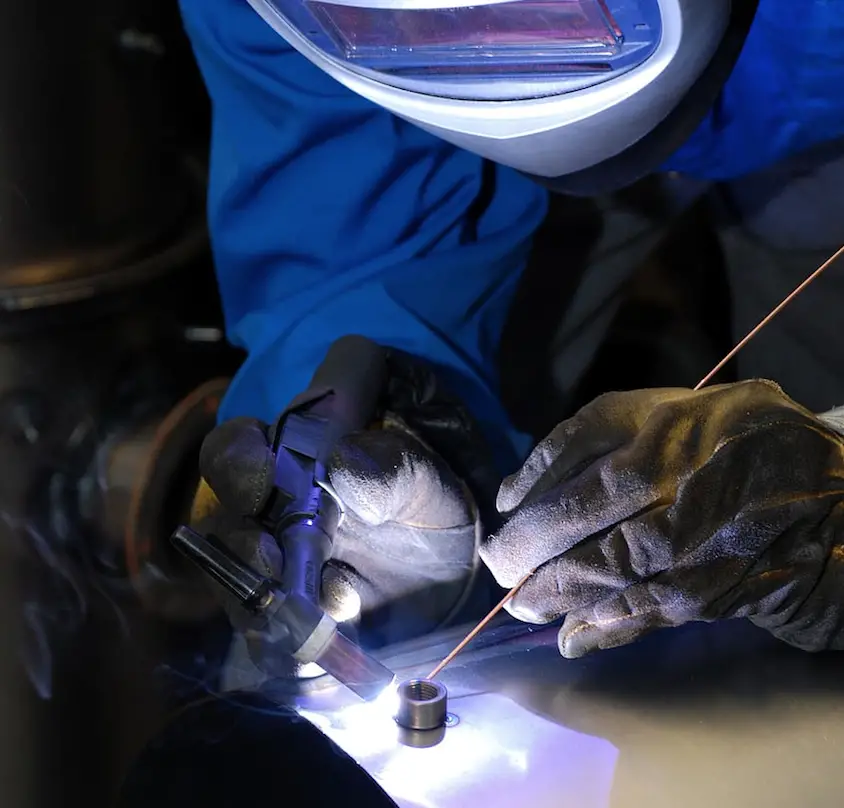
TIG will improve your dexterity and hand eye coordination. Since you must feed filler rod with your non dominant hand, keep a steady grip on the torch, and manipulate the foot pedal – TIG is the ultimate test for coordination. Many welders will get frustrated at first, but over time your dexterity will definitely improve and your confidence will increase.
The TIG process also allows the user to tackle smaller projects with ease. For really small repair work, laying small TIG dimes with 1/16″ filler rod can be really beneficial. Any project that is too small for MIG will often call for a TIG weld.
MIG can burn through thin walled material, while TIG can weld it fine as long as the amperage settings stay low and travel speeds are maintained.
TIG is often the choice of institutions that need to fabricate the highest quality parts for their projects. NASA and the U.S. Army have used TIG welding for a long time fabricate state of the art equipment. The tolerances on these projects are very tight, and the jobs are highly coveted. Becoming an aerospace TIG welder is held in very high regard.
When Is MIG Not A Good Choice?
MIG is generally not a good choice for lighter gauge projects. Like we mentioned above, the violent nature of a MIG arc will burn through thin walled materials very easily. It can overheat the project and cause serious warpage. Although welding tiny sheet metal is possible with MIG, it is generally left to the experts as it is an acquired skill.
When a customer wants the look of TIG (stack of dimes), it is hard to accomplish this look with other processes. Although it is possible to “MIG like TIG”, it is often more for aesthetics than actual strength.
To achieve these types of beads with MIG, very low wire speeds are used – and this can lead to welds breaking over time. All in all, if the client wants a very aesthetic, strong, small weld – MIG isn’t the best choice.
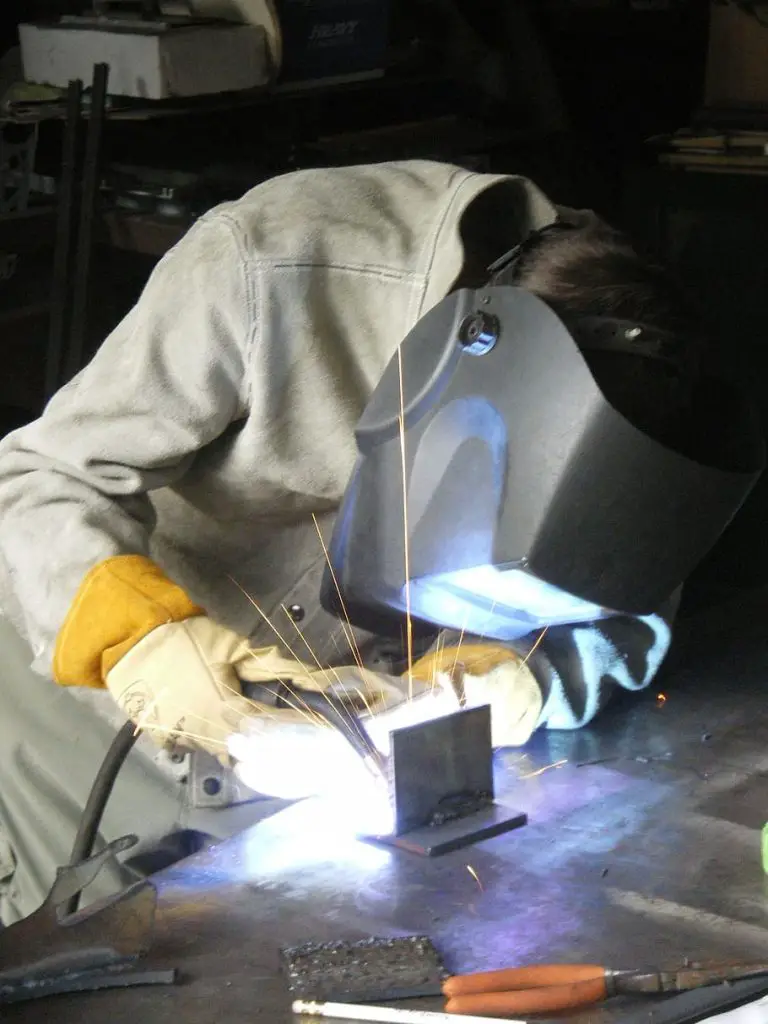
When it comes to aluminum welding, MIG can accomplish it well with what is called a “spool gun“. This piece of equipment takes a small 1 lb spool of aluminum wire, and can lay down some pretty nice welds. This process is much faster than TIG, and is great for large aluminum fabrication jobs.
However, aluminum TIG welds are regarded as the most pleasing to the eye – and are often stronger than aluminum MIG. For high grade aluminum work, MIG isn’t always the best choice – and we tend to stick with TIG from a standpoint of maximum aesthetics.
Aluminum MIG spool guns are also very pricey. If you’re looking to add one of these to your existing MIG machine, it is a purchase that should be well thought out. You can make a lot of money by doing aluminum MIG, but you’ll need the cash upfront for the necessary gear.
When Is TIG Not A Good Choice?
TIG is a much slower process than MIG. The prep work is more intense because you must remove all contaminants from the metal, and the welding process is slower (inch per inch). Really good TIG welders can be pretty fast at laying dimes, but MIG is generally more speedy. If your project requires making every minute count, then TIG is probably not the best choice.
If you gave two welders the exact same blueprint for a larger project, the guy MIG welding would probably finish hours before the guy who is TIG welding. With this being said, the TIG project would probably be more pleasing to look at.
If you’re doing quick repair work in the field, TIG can be tough to deal with. Often times the metal is dirty and the conditions/weather is adverse, so MIG (or stick) is usually a better choice. Scratch start TIG can be really beneficial at times, but beginners and intermediates will find that MIG is easier for most repairs.
If you’re dealing with old, rusty steel, there’s a lot of prep that must be done before TIG welding can take place. The term “clean enough to eat off of” is really true for TIG, and you must have the proper abrasives and grinder attachments to get down to the clean steel. If there is any mill scale, rust or oil on the metal when you’re TIG welding, you’ll end up with an ugly and extremely weak weld.
For beginners, TIG can be quite frustrating. It is often recommended that newbies play around with a MIG machine or a stick machine before they jump into the TIG game. Welding schools will often have students learn MIG before they move on to the TIG classes. At my welding school, we had to learn oxy fuel welding, stick welding, MIG welding, and then finally – TIG.
Once you get used to using both hands and your foot pedal at the same time, TIG can be such an enjoyable process that can turn into a rewarding career.
Wrap Up
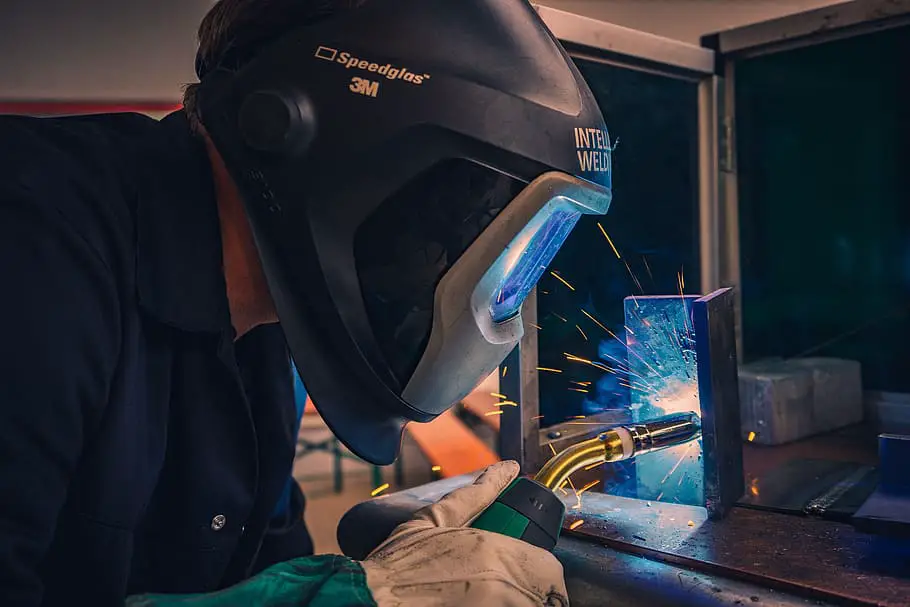
Both of these processes can produce some amazing results. With the multiprocess machines that are available today, you don’t have to choose between buying a TIG welder or a MIG welder. You can learn both and see which process you like best. Many of these machines allow for stick welding as well, and they are becoming increasingly popular for welders purchasing their first machine.
If you’re taking the route of welding school, you’ll get to work your way through classes involving both processes. Often times you’ll take your certification tests for both as well. This helps graduates decide which route they want to take when entering the work force.
In terms of landing a good welding job, being good at both will impress employers more. You’ll be more of an asset to the company from the get go. Often times during the course of a work day, welders will perform both MIG welds and TIG welds. If you’re asked to go hop on a TIG project, you don’t want to be the guy/girl that can’t keep up.
If you start your own business (which we recommend instead of being an employee), then you must be a guru at both.
Thanks for reading!
Featured image credit : Pxfuel.com

